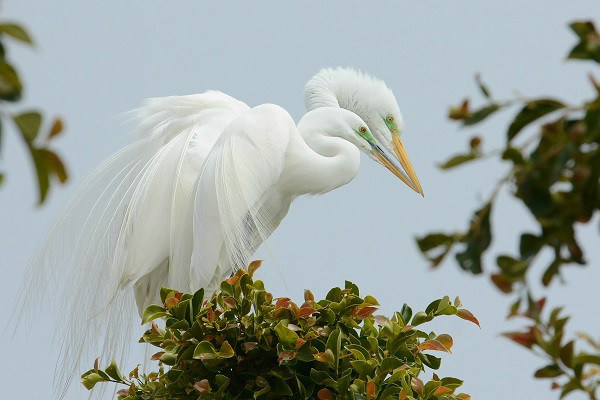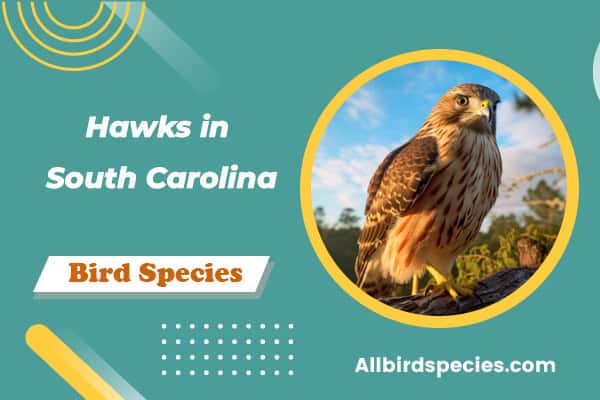14 Types of Woodpeckers Species in California (ID Guide)
Did you know California has 14 different woodpeckers? This makes the state a hotspot for bird lovers and nature fans. Learning about these woodpeckers is important for their protection and their homes. This guide will teach you how to spot them, their roles in nature, and where they live. It’s perfect for anyone wanting to improve their bird-watching skills or just interested in these amazing birds.
Common Woodpeckers Found In California
- Ladder-Backed Woodpecker
- Pileated Woodpecker
- Downy Woodpecker
- Hairy Woodpecker
- Northern Flicker
- Lewi’s Woodpecker
- Red-breasted Sapsucker
- Black-Backed Woodpecker
1. Ladder-Backed Woodpecker
- Scientific name: Picoides scalaris
- Life span: 7-8 years
- Size: (15-19 cm)
- Weight: (25-45 g)
- Wingspan: (33-38 cm)
The Ladder-Backed Woodpecker is a species that catches the eye with its unique look and role in nature. It stands out with its special appearance and lives in specific places. This woodpecker plays a big part in California’s ecosystem.

Identification Features
Spotting the Ladder-Backed Woodpecker takes a sharp eye. It’s known for its black and white stripes on the back and spots on the sides. It also has a medium-sized body. Males often have a small red spot on their heads, making them easier to tell apart.
Habitat and Distribution
The Ladder-Backed Woodpecker loves the desert and can be found in southwestern California. It’s a big part of the Mojave desert’s life. It lives where cacti and other desert plants grow, making perfect homes for it.
Diet and Feeding Behavior
This woodpecker eats mostly insects like beetles and ants. Eating these pests helps the plants and animals around it. Watching it eat shows how it helps the environment.
2. Pileated Woodpecker
- Scientific name: Dryocopus pileatus
- Life span: Up to 12 years
- Size: 16-19 inches
- Weight: 9-14 oz
- Wingspan: 26-30 inches
The Pileated Woodpecker is a big deal in the woodpecker family. It stands out because of its size and unique look. It’s interesting to learn about its size, how it nests, and its conservation status.
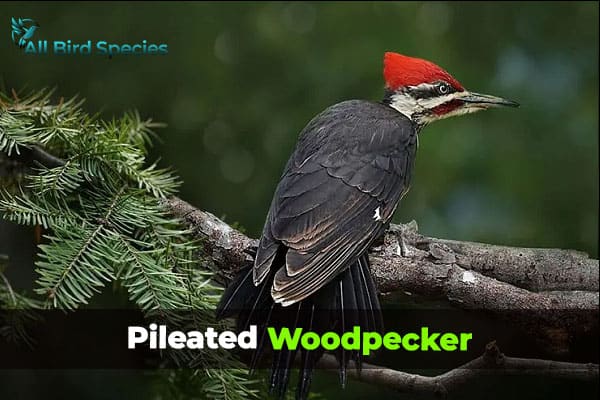
Size and Appearance
This bird is one of the biggest woodpeckers in North America. Adults are 16 to 19 inches long. They have black bodies with white marks and a bright red crest. These features make it a standout during birdwatching trips.
Nesting Habits
Pileated Woodpeckers like to nest in mature forests. They dig big holes in old trees for their nests. These nests are important for their young and help the ecosystem. After they leave, these holes become homes for other animals, showing how important they are.
Conservation Status
The Pileated Woodpecker is listed as Least Concern, but it still faces threats. Habitat loss from cities and logging is a big problem. Saving their homes is key to making sure we can still see these amazing birds in the future.
3. Downy Woodpecker
- Scientific name: Picoides pubescens
- Life span: 2-5 years
- Size: 6-7 inches (15.2-17.8 cm)
- Weight: 1 oz
- Wingspan: 13 inches
The Downy Woodpecker is the smallest in North America. It has black and white feathers and a red patch on the males. This makes it easy to spot in the wild.

Physical Characteristics
Downy Woodpeckers are small, about 6 to 7 inches long. They have short, rounded wings and stiff tails for pecking. Their white undersides and black backs make them easy to see.
Favorite Habitat
These woodpeckers live in many places. You’ll find them in forests, gardens, and parks. They like areas with lots of trees for nesting and finding food.
They can even live in cities, making them common in backyard trees and parks.
Learning about the Downy Woodpecker’s life helps us appreciate their role in nature.
4. Hairy Woodpecker
- Scientific name: Picoides villosus
- Life span: 5-10 years
- Size: 7-10 inches (17.8-25.4 cm)
- Weight: 1.5 oz
- Wingspan: 16-20 inches
The Hairy Woodpecker looks a lot like the Downy Woodpecker. To tell them apart, look for size and bill length. The Hairy Woodpecker is bigger and has a longer bill. Knowing these differences is key for bird lovers.
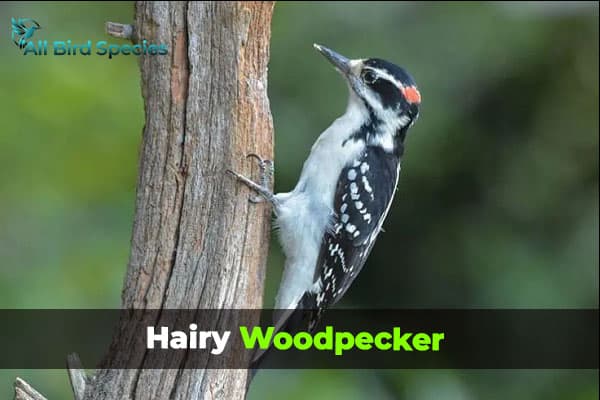
Similarities to Downy Woodpecker
The Hairy Woodpecker and the Downy Woodpecker share some features. They live in forests and woodlands, making them hard to tell apart at first glance. But, the Hairy Woodpecker is bigger and has a thicker bill, making it easier to spot.
Dietary Preferences
In California, The Hairy Woodpeckers eat insects under tree bark. This helps control pests and keeps the ecosystem healthy. They use their bills to dig into the bark, find insects, and eat their larvae in dead wood. This shows how important woodpeckers are to the environment.
5. Northern Flicker
- Scientific name: Colaptes auratus
- Life span: 5-8 years
- Size: 8-10 inches
- Weight: 2.5 oz
- Wingspan: 14-16 inches
The Northern Flicker is a standout among woodpeckers with its unique look. It’s easy to spot because of its beautiful brown feathers with black spots and a bold black bib. Its flight patterns are also quite noticeable, making it a bird that catches the eye.

Distinctive Features
Several traits make the Northern Flicker stand out:
- Brownish coloration with black spots gives it a dappled appearance.
- Characteristic black bib and a white rump, visible during flight.
- Notable preference for open habitats rather than dense forests.
Nesting and Brood Care
California Northern Flicker Woodpeckers build their nests in tree cavities, showing their adaptability. Sometimes, they choose less common places to nest, highlighting their versatility. Both parents take part in caring for their young, which is crucial for their survival and the continuation of their lineage.
6. Lewi’s Woodpecker
- Scientific name: Melanerpes lewis
- Life span: Up to 7 years
- Size: 10-11 inches (25.4-27.9 cm)
- Weight: 3.1-4.9 oz (88-139 g)
- Wingspan: 19-20 inches (48.3-50.8 cm)
The Lewis’s Woodpecker boasts a striking appearance with its dark greenish-black body, red face, and pink belly. Unlike many woodpeckers, it adeptly catches insects in mid-air with graceful, slow wingbeats. This species inhabits open woodlands across the western United States, and due to its fluctuating populations, spotting one can be a special experience for birdwatchers.

Lewis’s Woodpecker typically nests in snags and dead trees within open forests, favoring locations that provide clear views and ample foraging opportunities. Their choice of nesting sites highlights their adaptability and resilience, offering a safe environment for their young despite the challenges of migration. This behavior emphasizes the crucial role of deadwood in forests as vital habitats for various species.
Their diet reflects their colorful personality, as they consume a diverse range of food, from insects caught mid-flight with impressive agility to fruits and nuts gathered from their surroundings.
7. Red-breasted Sapsucker
- Scientific name: Sphyrapicus ruber
- Life span: 2-4 years
- Size: 20-23 cm (8-9 inches)
- Weight: 53-64 g (1.9-2.2 oz)
- Wingspan: 37-41 cm (14.6-16.1 inches)
The Red-breasted Sapsucker, distinguished by its vibrant red head and breast, creates a striking contrast with its white and black mottled body. These woodpeckers inhabit the Pacific Coast from Alaska to California, favoring coniferous and mixed forests. The sap wells it drills are crucial, providing food sources for various other species.
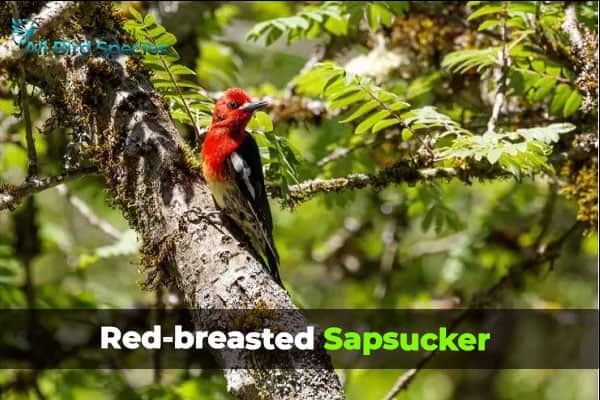
This sapsucker is a dedicated nester, preferring softwoods like willow, alder, and birch to carve out its homes. Its choice of nesting sites reflects a deep connection with its habitat, ensuring a rich environment for raising its young. This relationship underscores the intricate balance within ecosystems, where each species plays a critical role.
Primarily feeding on the sweet sap from trees, the Red-breasted Sapsucker also consumes insects and fruits, highlighting its dual role in the ecosystem. By creating sap wells, it fosters micro-habitats that benefit a range of species, from insects to hummingbirds, showcasing the interconnectedness and ecological significance of this woodpecker.
8. Black-Backed Woodpecker
- Scientific name: Picoides arcticus
- Life span: Up to 8 years
- Size: 9-10 inches (23-25 cm)
- Weight: 2.5 oz (62g)
- Wingspan: 16-17 inches (40-43 cm)
The Black-backed Woodpecker is easily recognized by its entirely black back and striking white underparts. This species thrives in burned-over forests, where it specializes in feeding on bark beetles. Its habitat spans boreal forests and northern regions of California, and it plays a vital role in post-fire environments, contributing significantly to forest health.

Mastering resilience, the Black-backed Woodpecker finds sanctuary and sustenance in the charred remnants of trees. It excavates nests in these burned trees, highlighting the persistence of life amid adversity. Its nesting habits underscore the role of fire in rejuvenating forests and creating essential habitats for species adapted to such environments, reflecting nature’s remarkable cycles of renewal.
Feeding primarily on the larvae of wood-boring beetles, the Black-backed Woodpecker acts as a crucial part of nature’s cleanup crew. By controlling insect populations that proliferate in dead wood, it aids in the recovery of post-fire landscapes. This specialized diet emphasizes the importance of preserving natural processes that sustain forest health and biodiversity.
How to Spot Woodpeckers in the Wild
Spotting woodpeckers can be a fun activity for bird lovers. These birds stand out with their bright colors and unique actions. Here are some tips to help you see woodpeckers in their natural setting.
Listening to their special calls is key. Each type of woodpecker makes a different sound. Learning these sounds will help you find them more easily.
Watching their actions is also a good way to spot woodpeckers. They often drum on trees for food or to talk to each other. You’ll see them climbing trees, pecking at the bark, or searching for bugs.
In California, Knowing where they live is important for spotting woodpeckers. They like wooded areas, especially where trees are dead or dying. These trees offer lots of food for them. Try visiting parks or forests with different trees to see more woodpeckers.
Remember to be patient and bring binoculars. Watching woodpeckers requires quiet and time, but it’s very rewarding. Enjoy your birdwatching adventures!
Woodpeckers Found in Other Regions:
| Woodpeckers in Wisconsin |
| Woodpeckers in Missouri |
| Woodpeckers in Montana |
| Woodpeckers of Indiana |
| Woodpeckers in Ohio |
Wrapping Up…
Woodpeckers of Northern California, you’ve learned how these amazing birds play a big role in California’s wildlife and ecosystems. They help control pests and keep forests and cities healthy. Their presence shows that the environment is doing well and highlights the diversity of our state.
As you keep watching and learning about these birds, every little bit helps. You can help by joining conservation efforts or just by watching them in your yard. Sharing what you learn with others can also make a difference.



